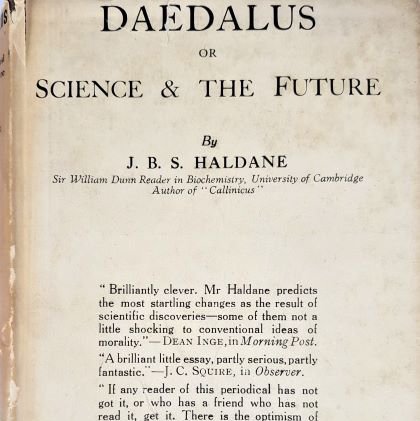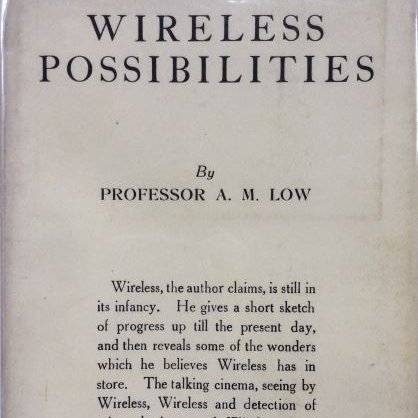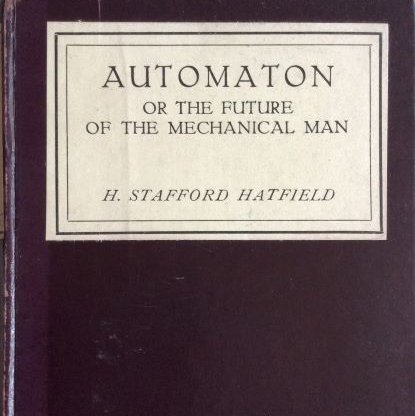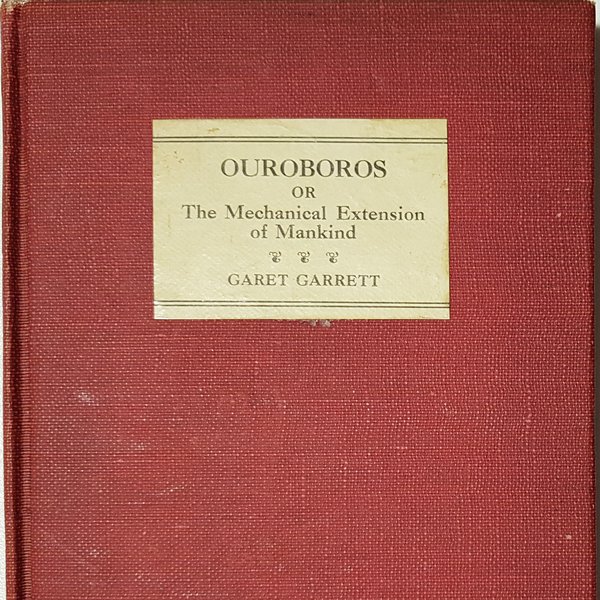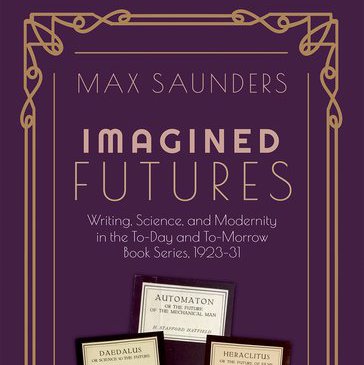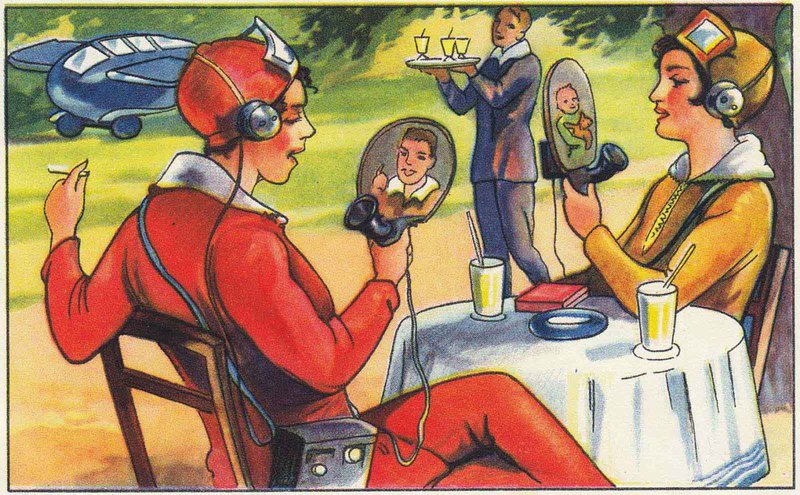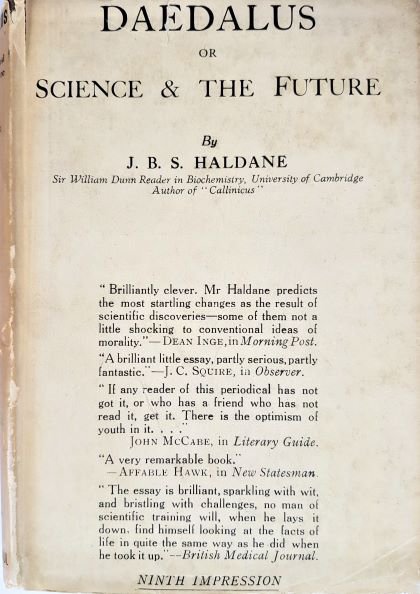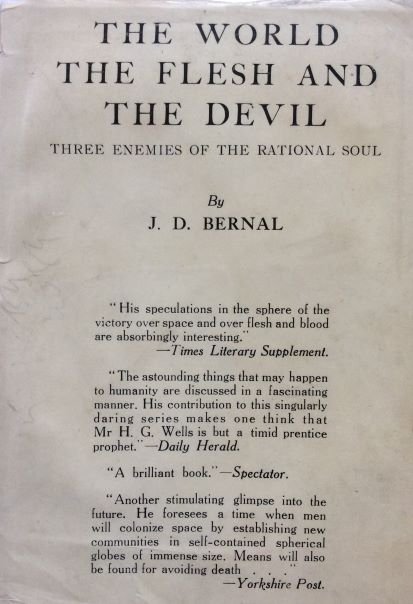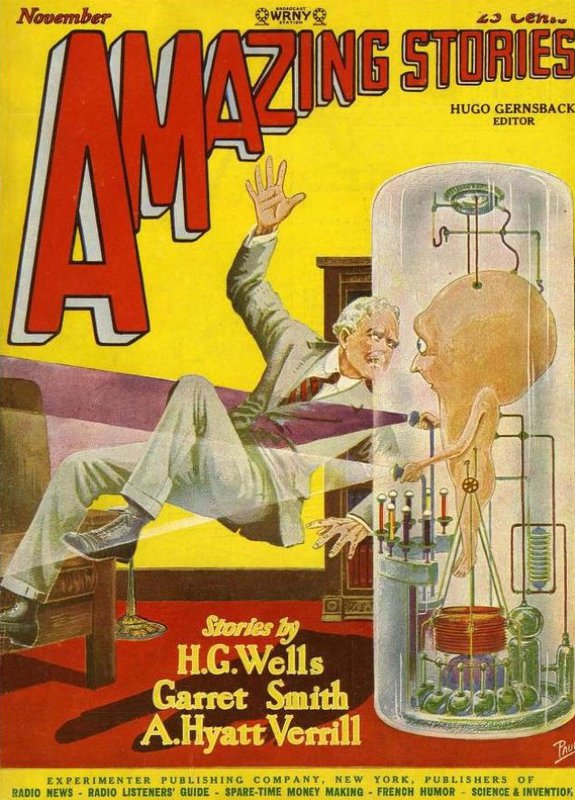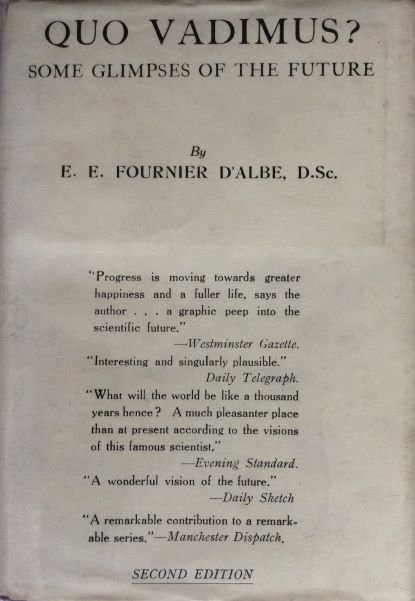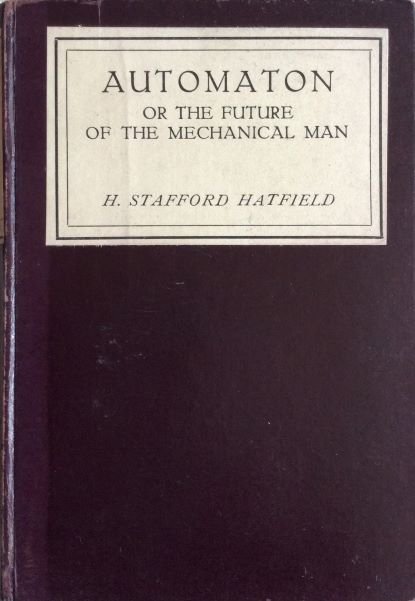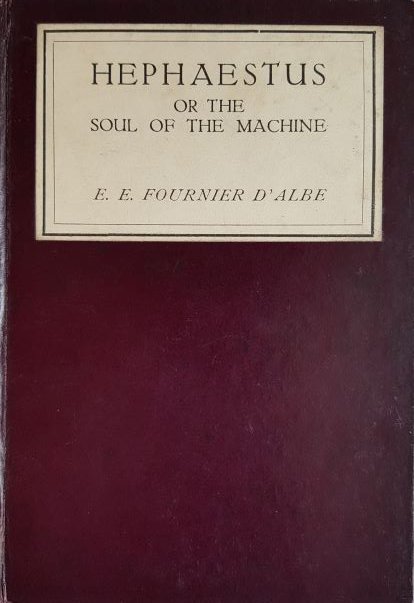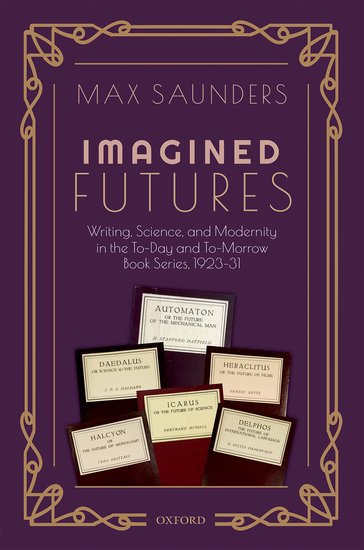The To-Day and To-Morrow Book Series, 1923–1931
To-Day and To-Morrow was one of several book series edited by C. K. Ogden for the British publisher Kegan Paul from the 1920s. Some were textbooks, like the International Library of Psychology, Philosophy and Scientific Method, which started with Wittgenstein’s Tractatus and translated many of the landmark works of modern Continental thought by writers including Rudolf Carnap, Bronislaw Malinowski, Ralph Mannheim, C. G. Jung, Jean Piaget, and I. A. Richards. There was an equally ambitious History of Civilization series and one of Psyche Miniatures, published in tandem with the journal Psyche, which Ogden also edited.
To-Day and To-Morrow was in many ways the most interesting. There have been some imitators since, but there had been nothing like it before. It ranged widely and diversely, covering not just individual sciences and disciplines such as psychology, war, or politics, but also everyday life subjects such as the home, clothes, food, sport, and leisure. There were volumes on the future of civilization (by Sarvepalli Radhakrishnan, who would become President of India), on intelligence (by Vernon Lee), on work, on transport, on the body, on sleep, and on the flying machine. Writers described the present state of their art (there were volumes on the novel, opera, music, and poetry) or science or topic – the “To-Day” part. Then they projected its “To-Morrow,” usually looking a lifetime or so ahead, though some took a much longer view.
There were eventually 110 volumes, by over 100 writers. Some were already well known, like Bertrand Russell, Sylvia Pankhurst, or James Jeans. Others would make their name later, like Robert Graves, Vera Brittain, Hugh MacDiarmid, J. B. S. Haldane, and J. D. Bernal. In many cases, their To-Day and To-Morrow volume was their first book. C. K. Ogden clearly had a genius for spotting original talents. The series continued publishing for eight years. Some of the volumes (by Russell, Haldane, Graves, and Jeans for example) became best-sellers.
Given the importance of the writers and the interest of the subject, it is surprising how completely the series disappeared from view. Even Routledge’s reissue in 2008 of nearly all the volumes attracted little notice. From another point of view, it isn’t surprising at all: what was written with the urgency of apprehension at the time acquires an antiquarian cast a century later. What use to us are predictions whose foretell-by dates have passed? Not just the texts, but the events they predicted, are now history – if the predictions were accurate, that is; if they weren’t, they might seem even less interesting. And yet. . . There are striking parallels between their time and ours. The contributors were responding to rapid developments in new communications and information technologies – especially the telephone, cinema, radio, and television. Several of the volumes are pioneers in what would later turn into cultural studies and media studies. They were also poised on the brink of the next disruption: the realization of the digital computer, which would change everything, including prediction (there was a To-Day and To-Morrow volume on that too: Sibylla, or the Revival of Prophecy by C. A. Mace). Some of the more visionary writers came very close to foreseeing the computer, but it remained tantalizingly out of conceptual focus – a striking example of the kind of lacuna Rebecca Roach discusses in the Methodologies theme essay: the blind spots in our discourses and our media.
In our situation, just as we come to terms with the internet, the World Wide Web, social media, and Big Data, and what they have been doing to us – very much the prime question for Ego Media – we are aware that our lives are about to be turned upside down again by the development of artificial intelligence.
This section explores some of the volumes most concerned with developments in technology, communication, and media, and the ways in which they were beginning to change people's sense of domestic and social spaces; looking at how their analyses both anticipate some of our predicaments, and also offer ideas and methodologies that can help us understand the technological changes of our time, and perhaps also help us prepare for the changes to come. It is in the To-Day and To-Morrow series that we encounter the first serious thought experiments in imagining a cyborg existence of humans augmented by technology and a hive-mind of networked subjectivities.
Fifty years ago, when viewers first watched Stanley Kubrick’s film 2001: A Space Odyssey in 1968, and one of the astronauts on his way to visit the Moon base makes a video call home from the spinning space station, I can recall a frisson in the cinema. Dr. Heywood Floyd (William Sylvester) calls home and talks to his daughter, whose birthday is the following day.
It was partly the comedy of embarrassment – the shy girl (played in fact by Kubrick’s daughter) making the audience realize that in this brave new technological world we would all, adults and children alike, be seen as well as heard; this bringing with it a sense that a new technology of video communication would bring with it a whole set of new possibilities, as well as new conventions and anxieties. But primarily, it was a sense that what we saw, in that video phone, was the future.
That despite the roots – obvious to us now – in the present: the fact that the call is made from a booth, very like a conventional telephone booth, with a glass door and the need to insert something to activate it (a card, rather than cash), and to dial a number (with buttons, then a futuristic touch, rather than the usual dial of the time). It was our future. The banality of the conversation rendered it utterly familiar – the parent, traveling for work, calling home.
But: about fifty years earlier, many writers had seen this future coming. Science fiction writers had imagined voyages to the Moon even earlier than that. Jules Verne had written De la terre à la lune (From the Earth to the Moon) in 1865; H. G. Wells, The First Men in the Moon in 1901. But the writers of the To-Day and To-Morrow series weren’t writing novels. They weren’t writing science fiction, for the most part; though they are inventive in their mixing of genres and occasionally slip into and out of it. They are not centrally concerned with characters or stories (though some of the volumes, as we shall see, have both). The books are expository rather than narrative. The work is inevitably speculative. Of course all prediction is inherently fictive. It describes states of affairs that do not exist in fact – not yet, at any rate. Yet the term speculative fiction is already in use to describe novels and stories imagining life in the future. So I propose the paradoxical term speculative nonfiction to capture the generic originality of much of the writing in To-Day and To-Morrow.
In many ways it follows the path Wells had mapped out in early works like Anticipations (1901) and The Discovery of the Future (1902) of developing a new basis for writing about the future, shaped by science and technology rather than religion, superstition, or the class struggle. To-Day and To-Morrow, by and large, is neither utopian nor dystopian; it is less concerned to shock and astound readers with the outlandishness of its visions of the future, and more with trying to imagine the details and preoccupations of everyday life in a world which has simply developed the technologies and sociopolitical innovations then available, or at least being attempted.
A number of the series’ imagined futures predict technological developments with impressive accuracy, anticipating today’s world of video conferencing, air travel, space travel, robotics, and biotech. Such predictions have been a staple of science fiction too. But there they tend to be more in the foreground. For To-Day and To-Morrow’s writers, the point is not just to imagine the new technologies, but also to imagine how they will change people’s lives.
Vera Brittain, for example, in Halcyon, or the Future of Monogamy (1929) anticipates developments in technologies we now take for granted: cheap rapid air travel and being able to watch films in our homes, on television. Commercial aviation was then very much in its infancy. The first transatlantic flight – two men, Alcock and Brown, no passengers, in an open-cockpit First World War bomber – had taken place just a decade earlier; Lindbergh’s first solo crossing just two years before. What concerns her, though, is not only the possibilities these developments open up for travel and entertainment but also how they will affect human partnerships. Mass air travel she thought would relax some of the pressures on marriage and facilitate the kind of “semi-detached” monogamy she favored. Certainly that, and the more seamless communications offered by the mobile internet, have enabled some couples to live at ever greater distances from each other, or to take jobs further away from home than was possible before. Her prediction that home cinema in the form of the then nascent television would distract people from infidelity seems less robust. Yes, in most cases, binge watchers and social media junkies may be interacting digitally rather than genitally. What Brittain didn’t foresee was how broadcast media would be supplemented by the interactivity of the web and how that could potentially escalate temptations rather than sublimate them. In a virtual world of pornography, webcams, dating sites, adultery sites such as Ashley Madison, and sites for sexual encounters such as Tinder, technology has increased rather than reduced the pressures on relationships.
The first volume, and the one which set the tone for the series, was Daedalus, or Science and the Future by the geneticist J. B. S. Haldane, which appeared at the end of 1923. It was a dazzling survey of the most pressing work he thought science still had to do. If the technological landmarks of the twentieth century seem to us to be in the physical sciences – flight, the jet engine, nuclear power, space travel, even the first actual moon landing of 1969 (the year after Kubrick’s 2001) – for Haldane such developments seemed problems of engineering for which the scientific conceptual heavy lifting had already been done. Like the other scientists writing for the series, he saw the role of technology as helping us transcend existing limitations. Though he doesn’t go into detail about the future of communications technologies, he does give us a brief glimpse of an always on, connected world:
It is a fairly safe prophecy that in 50 years light will cost about a fiftieth of its present price, and there will be no more night in our cities. The alternation of day and night is a check on the freedom of human activity which must go the way of other spatial and temporal checks. In the long run I think that all that applied physics can do for us is abolish these checks. It enables us to possess more, travel more, and communicate more. I shall not attempt to predict in detail the future developments of transport and communication. They are only limited by the velocity of light. We are working towards a condition when any two persons on earth will be able to be completely present to one another in not more than 1/1500 of a second. We shall never reach it, but that is the limit which we shall approach indefinitely. (18–19; quotations are to the UK first editions cited.)
Like almost all the other writers for the series, as we shall see, the one utterly transformational development he didn’t anticipate was the computer – at least not as early as 1923; though as we shall see, by 1940 he was writing about “Machines That Think.” His sense that it was in his own field, biology, that the most significant scientific research would be done was arguably borne out by the discovery of the double helix structure of DNA, and the subsequent fusion of biology and chemistry into molecular biology and then genomics. He chose the mythical figure of Daedalus as the title figure not for his best-known scientific achievement of crafting wings for human flight, but as a biologist, who had devised an artificial cow, inside which, Queen Pasiphae, the wife of the Cretan King Minos, could be impregnated by a bull, after which she gave birth to the Minotaur, half man, half bull. Daedalus, that is, for Haldane, was the pioneer of genetic modification – a topic he includes, anticipating that mankind will not only genetically reengineer plants, but also ultimately itself.
The most striking prediction was what Haldane called “ectogenesis” – the development of babies outside the mother’s body in artificial wombs. It was an idea taken up by several of the other To-Day and To-Morrow contributors, but also by Haldane’s close friend Aldous Huxley in Brave New World . Many futurologists, writers about technology, and science fiction writers had anticipated prosthetic developments: better instruments, better machines, better vehicles, etc. Ectogenesis proposed something different right from the start of the series: the idea of bionic engineering, the augmentation of the human with the machine to produce what we would now call a cyborg – not just a person using a machine, but a synthesis of person and machine to produce something unprecedented.
Archibald Low’s Wireless Possibilities (1924) was one of the few volumes not to have a classical title. It was also one of the very earliest volumes, so it may have been commissioned before the series brief had been finalized. Or perhaps he felt it wouldn’t be appropriate to find a mythological figure to represent such an intangible and modern technology. Hermes, the messenger god, might have been an obvious choice (though he was later conscripted to represent chemistry); or even Ariel, given that some later volumes took their titles from other sources, such as Shakespeare or the Bible.
Wireless Possibilities is an impressive example of Ogden’s aspirations for the series. Low, a Professor of Physics at the Royal Artillery College, was a dry, laconic writer. Wireless Possibilities is one of the shorter volumes. Much of it is devoted to technical considerations of how broadcasting technology might be improved. “The whole point of wireless is that it brings a man into your room,” Low says strikingly, “but it must sound like the man himself if it is to be really effective; it is this pitiful quality of reproduced sound that has wrecked the talking cinema” (28) – this, three years before The Jazz Singer. The blurb on the dust jacket advertises Low as revealing:
Some of the wonders which he believes Wireless has in store. The talking cinema, seeing by Wireless, Wireless and detection of crime, business and Wireless; and finally the terrible possibilities of Wireless in warfare. In an unexpectedly short time, he believes, Wireless will have entirely changed the surface of life as we know it to-day.
“Seeing by wireless” is what we now call television, though Low calls it “radio television,” not only arguing that transmitting moving images would be necessary and possible (indeed, John Logie Baird would demonstrate silhouette images in Selfridges the following year), but also anticipating television in color. He makes further accurate predictions, such as that there would be “special wave-lengths for […] Parliamentary debates.” But perhaps the one that seems most clairvoyant now is his anticipation of the mobile telephone:
In a few years time we shall be able to chat to our friends in an aeroplane and in the streets with the help of a pocket wireless set, and be able to do practically everything by the aid of radio that we now do with our voice. The only thing that will seem intensely strange will be that these comforts never existed before! (35)
The New Statesman was impressed, commenting: “The mantle of Blake has fallen upon the physicists. To them we look for visions, and we find them in this book.”
Low’s title signals right from the start of the series that the idea of media and communication will be crucial and that they are likely to transform everyday life. It may have inspired some of Bernal’s thoughts in The World, the Flesh, and the Devil – another of the most visionary volumes about media augementation – and it may have suggested his working title for that book of “Possibilities.” Some of his most striking thinking involves seeing how far one can imagine our internalization of such technologies, as we shall see.
J. D. Bernal’s The World, the Flesh, and the Devil, subtitled An Enquiry into the Future of the Three Enemies of the Rational Soul (London: Kegan Paul, 1929), is another of the most far-sighted, post-human, and also one of the strangest, in the series. It is also another of the few to have a title not from classics but, in this case, from medieval theology. It is traditionally taken to refer to the three main temptations to a Christian soul – the antithesis of the trinity. Bernal wants to update them for a post-Christian world view, so imagines how science might master each of the three. His “world” is the physical universe: matter, the planet Earth, and its place in the cosmos. He speculates how future generations could exploit the physical world, not just of our Earth, but of other worlds. He imagines humans colonizing space by constructing what we would now call biospheres, or even Bernal spheres, capable of supporting large populations, and traveling through the universe to explore other worlds, while remaining in communication with each other.
By the flesh he means the limitations of the human body, both in terms of its vulnerability and short life-span, and the constraints on its range of perceptions. Because what he cares about is rationality, he imagines in a bizarre section a future in which our brains are able to live longer because removed from our bodies and kept alive in machine hosts. Arthur C. Clarke thought that Bernal was probably the first to imagine humans being combined with machines to create what we now call cyborgs – though, as Clarke relates, that term wasn’t coined until 1960 by Manfred Clynes and Nathan Kline. (See Clare Brant’s essay here on cyberbodies in contemporary futuristic films.) The World, the Flesh, and the Devil is also one of the earliest elaborations of what has become known as the “brain in a vat” hypothesis – teasing out how much of our personal identity and experience inheres in our brain. In the philosophical thought experiments, questions are asked such as: if a brain were isolated from a body, but given electrical impulses corresponding to those received when walking, would it think it was walking? But Bernal isn’t interested in virtual reality; he doesn’t want to fool the brain about the outer world, but give it a new lease of inner life. He’s more interested in thinking than walking. Furthermore, rather than simply proposing to replicate our awareness of the outside world, he wants to enhance it. Our five senses are fine so far as they go, he argues; but wouldn’t it be better if we could add others?
We badly need a small sense organ for detecting wireless frequencies, eyes for infra-red, ultra-violet and X-rays, ears for supersonics, detectors of high and low temperatures, of electrical potential and current, and chemical organs of many kinds. (44)
He doesn’t leave it there. In a way he postulates the mobile phone without having to invent the technology, which needed to wait for microchip technology to be invented. But also because he obviates the need for handsets by imagining simply implanting the transmitters and receivers directly into the body, or rather, the vat which substitutes for it.
In fact the figure of the cyborg was already available in popular culture, notably in Francis Flagg’s pulp fiction “The Machine Man of Ardathia,” published in Amazing Stories in 1927.1
The Ardathians do not have males and females. They are not grown from ova, but from synthetically produced cells. After fertilization they are sealed into their unbreakable transparent cases, in which they can survive for 1,500 years. “As the embryo develops, the various tubes and mechanical devices are introduced into the body by our mechanics and become an integral part of it” (802). They use rays to extend their limbs outside the casings. (As the rays play across the narrator’s apartment, the capsule suggests a cathode ray from an early television.)
An intermediate species was reared in “ectogenic incubators,” indicating that Flagg was aware of Haldane’s ideas. As Susan Squier has shown, this tale is one of a number of texts appearing in the decade after the pioneering popular science writing by Haldane and his friend Julian Huxley.2 It imagines man and machine being fundamentally combined. Bernal too describes his brains in cylinders as “the first stage of mechanized humanity” (47). But it is where his elaboration develops the trope beyond its popular fiction avatars that it gets more interesting, stranger, and still more disturbing. In particular, it is where he focuses on communication technologies that his projection resonates with our information age.
With a radio-sense we should not only be able to communicate directly with our chosen interlocutor, but could do it without speaking simply by transmitting our thoughts directly. In short, telepathy: what might seem a quaint fictional hope, though it is rapidly being realized in today’s research using brain activity to activate machines. In July 2019, Elon Musk announced that his brain-computer interface startup, Neuralink, aims to implant a chip in the brain which will communicate wirelessly to a radio receiver behind the ear which can connect with a computer.
It gets stranger still. Bernal doesn’t stop with abolishing god and the devil, and many of the constraints of embodiment and aging. He thinks science can challenge mortality itself. In the boldest move in the book – and arguably in the entire series – Bernal imagines developments which might allow transcendence of individuality in a nonspiritual manner, by not only abandoning our bodies but our individual minds too. The radio signals from each machine-person would not be constrained by telephone wires but radiate out everywhere. Pushing even further this vision of enhanced humans communicating with each other directly, no matter how far away they are, he sees that the logic of this possibility is that each human will be connected, or could be, to all others. Bernal wonders about the possibility that his longer-living but still mortal brains, encased in their life-support machines, would be able to communicate their ideas so fully to each other that they would combine to form a single super-brain or “compound mind” (54) – what science fiction writers (since at least Olaf Stapledon) have called a “group mind” or “hive-mind.” Bernal's electronic, wireless version of this concept is probably the first formulation of what media theorists now call the “networked self.”
Yet, even more strikingly, he wonders whether, as our thoughts are all transferred electronically to the network (or as we would now say, uploaded), that would not give us an immortality more real than any dreamed up by theologians: the eternal existence of the most intimate and creative and valuable part of the human animal – not the soul, but the rational mind. That is, the ability to connect up individual intelligences would mean the end to mortality, since your consciousness, as it would be shared by others, would be able to outlast your individual brain. The abuse of today’s communication technologies might make us cynically think of the risk of “brain-hacking” in such a future. Or the proliferation of banality and hate speech on social media may make one doubt whether immortality of all communications is the right goal. But Bernal – a committed Marxist – is thinking collectivity rather than predatory competition or hypnotic consumerism. For him the idea that an individual’s thoughts could be propagated into others’ brains would effectively not only unite workers of the worlds but also offer the hope of a form of immortality after the vat can no longer keep the brain alive.
The compound mind may be different in scale and duration from the individual human brain, but it is not clear that it is different in kind. The limit Bernal’s project appears to come up against is imagining an intelligence as artificial as its cyborg container. That is an easy criticism to make with our hindsight after some seventy-five years of electronic computing and as machine learning begins to open up radically new possibilities of AI. Nevertheless, Bernal takes the trope running through the series of a prediction of greater interconnection (explored in the next section on Quo Vadimus?) further than anyone. His notion of a human race dispersed through the galaxy, each communicating directly with all, has major problems. It is not clear why a multitude will guarantee the immortality of your thoughts any more than a single recipient (except that any individual will die, whereas the multitude will keep reproducing itself). He doesn’t appear to think his argument is compromised by the fact that even if someone’s past thoughts survive, their death will stop them creating new ones. Perhaps he thinks new thoughts will be created (by others) in response to the past thoughts of the dead. Nor is it clear how an individual brain would be able to prevent the multiplicity of messages coming to it from everyone else from drowning each other out in cacophony. Welcome to the twittersphere, we might say. Because that is what seems one of the most surprising things about this extraordinary book. It appears also to have foreseen something uncannily like the wireless internet, though without having had to invent the computer first. That vision of the unimpeded flow of messages connecting the human race is both deeply rooted in the popular science discourse of the period and also stunningly far-sighted. Cyborg fantasies about “bionic” people tend to minister primarily to desires for power and longevity. Bernal sees that the value of a cyborg existence for future transhumans is also to do with the possibilites for augmenting communications and intelligence. Arthur C. Clarke called The World, the Flesh, and the Devil “the most brilliant attempt at scientific prediction ever made.”3
Though the series’ writers couldn’t foresee what Manuel Castells calls “The Network Society” in the digital/internet/multimedia sense in which we understand it, we have seen how Bernal predicted a form of mental interconnection.4 Interconnection was a familiar trope through the nineteenth century. A series of technological developments – trains, steamships, telegraph, and telephones – kept changing people’s sense of interaction between people and places.
Transport and communication are two of the fields in which E. E. Fournier d’Albe projects the future in Quo Vadimus? Some Glimpses of the Future (the first of two volumes he contributed to To-Day and To-Morrow). In some ways what he is offering is a condensation of the scope of the whole series, also taking in privacy, clothing, housing, children, education, labor, and government. But as with the other volumes under discussion here, it is when he addresses the acceleration and ramification of technological change that he becomes most compelling, not just for his attention to the invention of gadgets, but for his appreciation of their transformation of audiences, forms of publicity, and speech acts, even of the senses and of memory:
The consequence of that constant acceleration is that new developments and achievements succeed each other with bewildering rapidity. Hardly have we got accustomed to the idea of telegraphy without wires when radiotelephony becomes an accomplished fact, and within a few years there is a rich crop of listeners with their wireless receiving sets counting by the million. An entirely new form of publicity comes into being, and a speaker on Savoy Hill is able to speak to an audience of millions and sway them by his voice more effectively than he can do by cold print in the newspapers. (76–77)
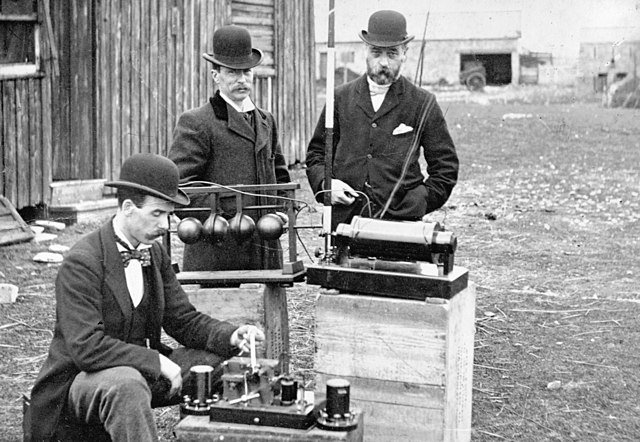
What is clear here is that Fournier d’Albe is responding to the disruptions of the newer technologies of audio recording, radio, and cinema – all of which were developed in some form at the end of the nineteenth century, but which were only beginning to be effective and commercial in the early years of the twentieth:
And this is only a beginning. Communication will become closer and more general. Already the earth is a network of lines and cables, linking continent to continent. Soon a speaker will have the earth for his sounding board and his hall of audience, and the privilege of addressing the human race will be prized above a coronation. Human sight and hearing will extend its range enormously, not only in space, but in time also. For the cinema film and improvements in the recording of sound will make it possible to make minute and comprehensive records of past sights and sounds for future reproduction, so that nothing of any value may be lost. (77–78)
The turn at the end of that last thought takes the future of cinema into the home movie. But it has taken still newer technologies fully to capture its totalizing imagination (“nothing of any value”) – video cameras first, then their digital heirs, and the associated Web 2.0 capabilities of uploading of such video material onto platforms like YouTube; or the use of wearable tech for lifelogging. Later he talks of how “mankind is now economically unified throughout the world by the astounding feats of intercommunication and transport” (85).
Quo Vadimus? anticipates globalization and ways of describing it, though in a utopian vein, rather than our more critical analysis of the ways the main drivers and beneficiaries of such discourse have been multinational corporations rather than a liberated mankind. It becomes even more utopian in the following pages, as he imagines medicine curing disease and preventing aging. But I want to pause on that image of unification. One striking feature is that it is unification conceived in many different fields at once: unification of the planet, of humanity, of communication, of language, of government, of travel and trade. From one point of view that was the author’s aim: to sketch the future in general, without confining himself to one branch of knowledge. But many of our authors share his perception of increasing intercommunication and interconnection. Indeed, his sketch here encapsulates the arguments of several of the other volumes, such as Sylvia Pankhurst’s Delphos (1927), advocating an international language, or “Inter-language”; or Ernest Betts’s championship of the silent film in Heraclitus (1928) as a universal art medium; in addition to those predictions of advanced communication technologies in Bernal and Low already discussed. Fournier d’Albe takes the idea to the point where it sounds like mysticism, or the science fiction of films like Solaris or The Matrix, say:
The Earth will have become a sentient being. – It will be as closely unified and organized as the human individual himself. Mankind will be the “grey matter” of its brain. (86)
But insofar as such an image is read as metaphor, it is accurate enough; it’s hard now for anything to happen in the developed world without it being sensed somewhere else: by CCTV, satellite, spy planes, or the monitoring of the various communication technologies, social media, or the Internet of Things. And the rhetoric of connecting human intelligences together to produce a collective brain is remarkably similar to Bernal’s idea (and may even have influenced it). Fournier d’Albe’s vision is more modest. He concedes that his sentient Earth “may not resemble a sentient being high up in the scale of life.” It is, perhaps, more physiological, and neurological.
A good historicist might object that such observations are nothing special. They were not only common in the 1920s, but even clichés before then.5 The artist William Henry Hyde, for example, could title his image of telegraph poles and wires, with a faint outline of St Paul’s Cathedral behind them, “The Nerves of London” in 1907.6 Hyde’s image and title suggest that the “nerves” are more than technological extensions of our nervous systems. They are both the wires themselves and the effect they have on us: nerves you suffer from as much as a technology of feeling. The illustration juxtaposes modern neurasthenia with the backdrop of a spirituality increasingly troubled by the incursion of technological modernity. Whereas Fournier d’Albe’s point is that increasing connectivity will not “increase the tax on our nerve force” (82). He sees interconnection as enhancing life, an object of awe and desire. In this respect our predictors of the 1920s were very much of their time. And if that sometimes makes them seem prophetic of our time too, that is because the age they lived in saw the birth of many aspects of our modernity, aspects they were amongst the first to grapple with, to seek ways of comprehending and representing. After all, Fournier d’Albe’s vision of an interconnected planet in Quo Vadimus?, together with Bernal’s interconnected minds, are forerunners of the utopian or anarchist advocacy of the early internet as a space of freedom and community, as in John Perry Barlow’s “A Declaration of the Independence of Cyberspace,” published in 1996:
Governments of the Industrial World, you weary giants of flesh and steel, I come from Cyberspace, the new home of Mind. On behalf of the future, I ask you of the past to leave us alone. You are not welcome among us. You have no sovereignty where we gather.
[. . . .]
Cyberspace consists of transactions, relationships, and thought itself, arrayed like a standing wave in the web of our communications.7
H. G. Wells had imagined something called a “World Brain” in 1937, but that was essentially a reworking of the notion of a universal encyclopedia using the then-new technology of microfiche:
There is no practical obstacle whatever now to the creation of an efficient index to all human knowledge, ideas and achievements, to the creation, that is, of a complete planetary memory for all mankind. [. . .] It foreshadows a real intellectual unification of our race. The whole human memory can be, and probably in a short time will be, made accessible to every individual.8
Wells’ concept of “intellectual unification” is one of the accumulation of information. Fournier d’Albe and Bernal are imagining something different: the interconnection not of data but of people; something that is closer to the idea of a networked society in the rhetoric of the internet. At least, as suggested, it is closer to the utopian expression of that aspiration as the internet was being developed. Its theorists now are more concerned with a more disturbing aspect: that whatever mass interconnection may do for people’s sense of community and solidarity, it simultaneously does something else covertly: turns individual human agents into information commodities, data that can be sold usually without the knowledge of or benefit to the individual producing it.
Nevertheless, one wonders what the writers of To-Day and To-Morrow might have made of the internet, which, for all its faults and threats, has effected many of their ambitions. If microfilm libraries never quite achieved Wells’s project of the “world brain,” the World Wide Web comes closer to mobilizing the “whole human memory,” even if it doesn’t help the individual brain to know what to remember or how to think about the “information” it retrieves. However, while Twitter users like to riff on the idea of contributing to a “hive mind,” when we look back to these forward-looking futurists of the 1920s imagining networked existence, the differences between their projections and the reality of the internet are comparably striking. Low’s or Bernal’s visions of interconnection are as if unmediated – perhaps because shaped by the telephone’s illusion of immediate presence: a voice is in your ear, or as Low puts it, a man is in your room. A thought is transferred from one brain directly to another. Whereas in networked interaction on social media the myriad platforms too are constantly present to us.
The questions posed by these books of the relation of human to machine, and human brain to machine, indicate a pervasive sense that the prospect of machine intelligence seemed on the horizon. It is obvious to our hindsight that the form it would take was the computer and that it was closer than they perhaps thought. Thanks to the technological accelerations of war, the first programmable electronic digital computer, Colossus, developed at Bletchley Park, would be operational by the end of 1943, just twenty years after To-Day and To-Morrow began, and only twelve years after it finished. What is surprising is that for all their sense that something like it was needed, the writers for the series couldn’t quite see what it was going to be or how it would be necessary to enable many of their predictions. It is the most significant blind spot of the series as a whole. How did these hundred-plus prophets of the 1920s, many of them brilliant leaders in their many fields, fail to see the most salient technological fact of our modernity: the invention of the electronic computer?
The volume that puts this paradox into perspective most clearly is Automaton, or the Future of the Mechanical Man (1928) by H. Stafford Hatfield. In the process he reveals much about the sheer difficulty of prediction. Like many of the authors, he is fascinated by the possibilities technology offers for prostheses – artificial extensions of our natural faculties and abilities. Where Alfred North Whitehead argued that such prostheses took humanity to a “higher imaginative level,”9 Hatfield, who wrote a number of popularizing books about science and particularly invention,10 identifies an impasse in innovation:
In our machines we have already developed limbs of a power and precision exceeding our own many many thousand-fold. In our instruments, we have developed senses exceeding our own, in many cases, a million-fold in sensitivity. Indeed, they are capable of receiving impressions, such as magnetism, which are qualitatively imperceptible to our natural senses. What we have still to develop is the mechanical brain, the link between instrument and tool. (14-15)
Though the emphasis here is on our not having been able to develop anything you could call a mechanical brain, the Kegan Paul dust jacket cranked up the claim for attention:
Hitherto Man’s chief inventions have been extensions of his sense or of his limbs. The author of this work prophesies the dawn of an era in which substitutes will gradually be found even for the human Brain.
Dr Hatfield is the inventor of the “Chemical Robot” which performed such marvels at recent demonstrations in London.11 An account is here given of the principles on which a mechanical brain is constructed [. . .]
This is not exactly the chutzpah of Ray Kurzweil’s How to Create a Mind (2012); Hatfield isn’t talking about the electrochemical mind that digital computer scientists are aspiring to imitate. Nonetheless, that mechanical brain is what we’d now call a computer. But the fact that he calls it a mechanical brain shows he is still locked into the machine man paradigm.
In the volumes dealing with technological invention, such as Wireless Possibilities (1924) or Automaton (1928), the basic model of technology is mechanical rather than electronic. Though the Lorenz cipher encryption machines used by Nazi Germany were mechanical devices to switch electrical circuits in complex patterns, the computers developed to crack them had to be electronic. Even a writer such as A. M. Low, discussing crystals and valves and the development of television, sees the importance of amplification as an essentially mechanical problem – how to turn minute sonic or radio signals into clear, audible sounds. Hatfield is more concerned with the automation of labor than about robots (though he does contemplate these): “The ruling passion of our maturity is the conquest of power over the material world.” He defines automata as having three parts, corresponding to the senses, brain, and limbs of humans. But he has little to say about machines that could begin to do human brain work. He is mainly concerned with automated control systems. When he contemplates something involving as many variables as air navigation, he assumes the problem is just too complicated for mechanical solution. But rather than laughing complacently as we program our sat-navs (which are perfectly capable of proving him right by telling us to drive into a river), we should realize how difficult it must have been, years before the Bletchley Park experiments (which were in turn kept top secret for decades after the war), to predict not only the existence but the rapid evolution of the computer. Even those like Hatfield who were clear about what invention was needed and why could not imagine how the paradigm had to be shifted. It was not only the To-Day and To-Morrow authors who had hit the prophetic wall. However, Bernal nonetheless does predict that human intelligence might somehow be able to be transferred to machines and that such machines could then be connected so as to network (as we would now call it) individual thinking.
This computer-shaped hole in the series is characteristic of other volumes too. Even Bernal does not imagine that something other than the human brain might ever be able to produce thoughts. Controversial though the concept of artificial intelligence remains, we do at least have the idea; and it appears that computers gave it to us. That is to say that the invention of digital computing then enabled new acts of imagination. Without that technology being quite within reach, Bernal’s solution was to keep the human brain and just plug it straight into mechanical prosethetic senses and limbs, and an electronic communication network.
Nonetheless, part of the interest of the series is in how its futurological visions inspired later ones, both in subsequent popular science writing and in science fiction. Bernal’s book (along with Daedalus) is credited with influencing Olaf Stapledon, as well as later writers such as Bruce Sterling.12,13,14,15 Robert Scholes calls The World, the Flesh, and the Devil a “book of breathtaking scientific speculation” that “is probably the single most influential source of science fiction ideas.”16 And Arthur C. Clarke, who invented the geo-stationary satellite (which makes sat-navs possible) and in his futurological 2001: A Space Odyssey created in the computer HAL, the most memorable of talking interfaces with a mind of its own, owned a copy of Automaton.
Good though Hatfield’s Automaton is, and given that he was credited with that spellbinding demonstration of something known as a “chemical robot,”17 it is surprising that in engineering terms it is very slightly out of date. It has now become a truism of writing about the information age that Norbert Wiener, celebrated as the founding father of cybernetics, based this theory on research done on the automated aiming of anti-aircraft guns during World War Two. It would be an untruism to see that work as without prewar precedent.18 David Trotter writes about the Vickers Predictor: “an analogue computer connected to an anti-aircraft gun. Fed information about the height, speed and bearing of an approaching aircraft, it calculated trigonometric firing solutions and fed them automatically to the weapon.”19 He describes a photo in the Illustrated London News of the gun being used in a defense exercise while being televised in 1936. But this “extraordinary real machine” was in fact in service from 1928 – the same year Automaton appeared – and its patent had been applied for in March 1924.20 The analog computer was a mechanical device, still requiring two operators to input the horizontal and vertical movements of the aircraft. Such a device was still a long way from an electronic digital programmable computer, and does not supersede Hatfield’s or Bernal’s visions of machines as merely prostheses for the human brain. Yet the fact that such a prominent machine was being developed and used throughout the publication span of To-Day and To-Morrow, and was given a name connecting mechanical computation with prediction, is striking, as is the fact that no one in the series comments on it (even though it is exactly the kind of cybernetic mechanism Hatfield discusses) or is drawn to speculate on the future of computation, especially in the service of prediction. If they had, would they have remained inhibited by the mechanical paradigm? Predictably, it was Haldane who was to take up the issue later in an essay entitled “Machines That Think,” discussing predictors and also electrical calculating machines.21 But that was in 1940: before Colossus, but a decade after To-Day and To-Morrow had wound up.
It was because the analog machines were so impressive that the mechanical paradigm was so compelling. When in Vulcan, or the Future of Labour (1927) Cecil Chisolm describes an “automatic calculator” (18) – i.e., a punched card reader – he says:
Surely its inventor came very near to giving mankind a machine which can think! Already the Robot is nearer than we imagine. It is no far step from the automatic tabulators – those giants which now help many of the chief Governments through the labour of the census. (19)
Indeed. These data storage machines used in the 1890 US Census were made by Herman Hollerith’s company, which became the core of IBM.
It might be countered that the fact Hatfield comments on the failure to engineer a mechanical brain shows he was effectively predicting one, that other technologies had advanced to the point where a sophisticated control system was palpably the next necessary thing. This is in contrast to Wells’s notion of a “World Brain,” conceived essentially as knowledge content – a conveniently scaled archive of existing information – rather than as artificial intelligence – the mechanization of the process of thinking. Similarly, the dust-jacket blurb assumes he was not only predicting but describing the principles of a “chemical brain.” That argument has considerable force. The writers knew something was required to perform the brain function if machines were to evolve to the next stage. But it was impossible to see what it would be. Mechanical? Chemical? Cyborg? It is all the more surprising, given that domestic electricity still felt modern, and electronic devices such as radio and especially television were at the cutting edge of modern technology, that it was not as obvious to them as it is with hindsight that what they were looking for would be an electronic brain.
Another of the most impressive volumes in the series, Timotheus by the literary critic Bonamy Dobrée, imagines “the Future of the Theatre.” In a mixture of Wellsian time travel and Swiftian satire of monomaniacal projectors, the narrator describes a visit to a theater in the future. Here, language has all but disappeared – one might say the theater has tried to imitate the cinema. And what has moved to the foreground instead is the gimmickry of what we’d now call special effects: modulations of light and rhythm that arouse emotions in the viewer. This in 1925, two years before the arrival of the “talkies,” but clearly anticipating technological augmentations of film. Dobrée has almost predicted the “feelies” of Brave New World, unsurprisingly, since Aldous Huxley, a friend of Haldane’s, was doubtless aware of the series as it appeared.22 But it also prefigures our multimedia pop video world of 3D, CGI, fantasy, and the rest (Dobrée actually imagines a 3D video recorder, p. 46) and arguably also the rhetoric of “immersive” experiences associated with these forms but especially with the promise of virtual reality.
It also enables a comparative understanding of the relations between futurologies in different fields and how they might affect each other, as, for example, when literary then cinematic imaginings of video phones – which make an early appearance in To-Day and To-Morrow in André Maurois’s 1927 volume, The Next Chapter, the War against the Moon – influence subsequent consumer technology design.23
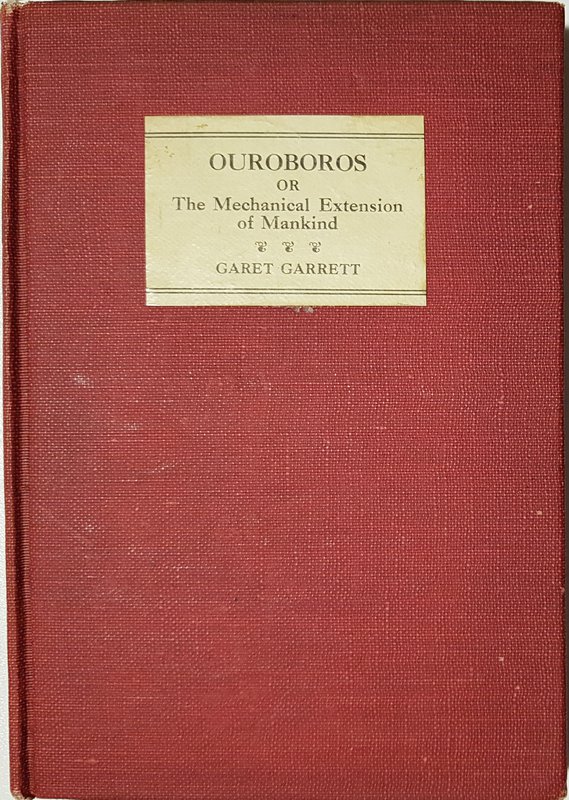
The historical moment of To-Day and To-Morrow, poised just before the invention of the computer that the writers only dimly apprehend, can be compared to our own moment, poised before the full realization of artificial intelligence (AI), of which we keep getting tantalizing and disturbing glimpses. We don’t know what forms exactly it will take. But we know it will transform our lives utterly, changing our jobs, our home life, our transport, our health, our leisure, and our care. Will it enhance our imaginative agency; or will it rival it?
For the 1920s it was mechanization that presented a comparable challenge. As Fordian mass production was rolled out beyond the automotive industry, and other machines became affordable for the home, people sensed their relation to the machine was evolving rapidly. One of the To-Day and To-Morrow books that develops that idea most powerfully is Garet Garrett’s Ouroboros, or The Mechanical Extension of Mankind (1926). Garrett is very good on how machines have rapidly both made themselves indispensable to us and also seem to be gaining the upper hand over us. You wonder if the makers of The Matrix had read Ouroboros or Fritz Lang, whose Metropolis would appear the following year:
The riddle is that industrial civilization, having created to its unknown ends a race of mechanical drudges, requires nevertheless a contribution of human toil more intense, more exacting, more irksome than ever. (21)
For the Cassandras of AI, what machines might do to humans is a question which has returned with a vengeance, as when Stephen Hawking warned in 2014 that “the development of full artificial intelligence could spell the end of the human race.”24
Garrett wonders what “a planetary tourist,” coming to visit Earth, would make of our relation to machines and asks (in a Samuel Butlerian vein):
What may you deduce from these facts? First, you will be amused that people are so naive as to think they make machines. Then you may say there are two kinds of people here, agricultural and industrial. The earth makes one kind; machines make the other. (28)
And he makes it clear that this vision of the machines calling the tune was either a product of the First World War or certainly heightened by it. The conflict was:
a machine-war. What made that war so terrifying, so destructive, so extensive, was the power of the machine – an inconceivable power except as it disclosed itself from day to day. No one beholding the event from a firmamental point of view could have supposed it was a war between races of men. Man in contrast with the machines he served was pitifully insignificant. (45)
But Garrett concludes not with a quasi-fascist view of man’s insignificance, but with the immense significance of the fact that mankind created the machines in the first place. And it becomes clear why he has chosen this curious style; it too is the recounting of a modern creation myth – the creation of the machine:
How strange at least that with an incentive so trivial and naive in itself he should have been able to perform an absolute feat of creation! The machine was not. He reached his mind into emptiness and seized it. Even yet he cannot realize what he has done. Out of the free elemental stuff of the universe, visible and invisible, some of it imponderable, such as lightning, he has invented a class of typhonic, mindless organisms, exempt from the will of nature. We have no understanding of creation, its process or meaning. The machine is the externalized image of man’s thoughts. It is furthermore an extension of his life, for we perceive as an economic fact that human existence in its present phase, on its present scale, could not continue in its absence. (92)
Like Freud, Garrett sees the machine as a prosthesis for our fantasy: a technology of wish fulfillment. But where for Freud modern man is a prosthetic god only in his own fantasy, for Garrett, the godlikeness isn’t in what we do with our prostheses, but that we have created them in the first place.
For Garrett the machine is “the externalized image of man’s thoughts,” not just his wishes. It is “an extension of his life” not just in the sense of stretching it out – making the same nature reach further – but because in doing so it also it makes our life something different. The transformation is qualitative as well as quantitative. This is something different from the fascist co-option of technology to incorporate the human into the machine state, which makes one suspect a compensatory fantasy to assuage castration anxiety, the prosthesis providing a reassuring sense of phallic power. Rather than technology compensating for something the body is felt to lack, Ouroboros celebrates technology as the gaining of something new, offering new possibilities. Where some volumes, like Bretherton’s Midas, say, argue that machines change how we think for the worse, robotizing humanity, Garrett inverts that argument, seeing technology as something that liberates creativity and innovation.
If we were asked to identify today where we had extended our lives with the externalized images of our thoughts, we should probably say media. Ouroboros is clear about the link between technology and media: machines solve the problem of production, but that produces another problem: that of selling what you’ve produced, and this generates advertising. The series has strong representation of media, as we have seen, with books on wireless, cinema, advertising, and the press. Some of the To-Day and To-Morrow writers do use the word media;25 but not many, and mostly not in the sense of forms of cultural communication. Yet not only are they often writing about it, but they do so in a way that anticipates the foundational formulation of the concept by Marshall McLuhan in his Understanding Media (1964).26 It’s not impossible that McLuhan’s subtitle – The Extensions of Man – was reminded of its Emersonian roots by the subtitle of Ouroboros: The Mechanical Extension of Mankind.27
E. E. Fournier d’Albe’s second volume for the series, Hephaestus, or the Soul of the Machine (1925), sees the importance of technology as arising from the relationship between body and mind (67). Fournier d’Albe posits Hephaestus as the god of machinery, the only Olympian god to have survived into the modern age. “The God of Fire is the supreme master of the earth” (14). But he is also the god of the industrial revolution: “His furnaces are roaring [. . . .] He has girdled the world with hoops of steel” (14). Fournier d’Albe is thus able to write Hephaestus as another modern myth, a myth of “the age of machinery” (25) with Hepahestus as its prosthetic god. His intriguing argument is that all technology is prosthetic, an extension of the individual body, yes. But that it is correspondingly an expression and an expansion of mind. That is what he means by “the soul of the machine.”
This might appear the zenith of the dream of instrumental reason: technology as a realization of human “purpose.” But it’s the opposite. Instead of reason becoming the instrument for imposing the human will on the natural world or social order, the instrument becomes reason; the technology is not only for use but an object of understanding and even aesthetic contemplation. Hence Fournier d’Albe’s conclusion. Rather than becoming the “kind of prosthetic God” Freud saw industrial man as being, troubled by his prosthesis, machine man here transcends human nature, to become “super-‘natural’”:28,29
The earth is being organized and unified under the ægis of the human race, the protoplasm of this planet, the race which, transcending the mechanism and long-established traditions of its own germ-plasm, enlarged and multiplied its functions until it acquired the use of fire. Upon that achievement it build an unprecedented form of life a super-“natural” edifice of infinite power, as yet but dimly realized, but which in its full beauty and perfection will be nothing less than Divine. (90).
It is a trope that is back with us, for example in Yuval Noah Harari’s Homo Deus: A Brief History of Tomorrow (2016), or in Michio Kaku’s prediction that “if you want to see the future, you have to understand physics, and you have to realize that by the year 2100, we will have the power of the gods”;30 but with little sense of the history of the trope, nor indeed of the history of writing the history of the future. Perhaps it is not just that each age is awed by its own technology, but that this represents a moment of strain in the concept of prosthesis itself, as the complexity of technological developments begins to alienate the user. In his book Feed Forward, Mark Hansen argues that
if twenty-first century media open up an expanded domain of sensibility that can enhance human experience, they also impose a new form of resolutely non-prosthetic technical mediation: simply put, to access this domain of sensibility, humans must rely on technologies to perform operations to which they have absolutely no direct access whatsoever [. . . .]31
Hansen is concerned with how, while we may be using the internet as an instrument (of information, social life, shopping, etc.), we are simultaneously the objects of other people’s (or corporations’) purposes, as they aggregate and monetize our data. And that this level of the operation is performed algorithmically and hidden from our view, so we cannot be directly conscious of it. Fournier d’Albe’s idea that our technological power is “as yet but dimly realized” might sound comparable. But his futurology, and that of the series as a whole, exemplifies the opposite: an ability to imagine what has not (yet) been produced. It may, rather, be a glimpse of how future technological interconnection (his future, our reality) might take technology, and modernism, beyond prosthesis.
When Fournier d’Albe ends the book saying that it is fire-related technologies that make divinity, we grasp that the equation is reversible. The soul of the man is, or becomes, the soul of the weapon, the technology. That move from the mechanical to “science and invention” is crucial. Machines are the realization of creative minds. Fire enables us to be like gods, if prosthetic ones. According to this view, our souls, our minds, do not just turn the material world into ideas; they are also altered by our prostheses. Ideas change the mind.
The “mechanical age,” which to some appears as the very negation of the soul, is, on the contrary, the age of supreme psychical achievement.
Science and invention are for ever annexing fresh regions of the universe and subjecting them to the free play of our mental faculties. The process of bringing material things into subjection to our will is a process of sublimation, which does not drag us down to the dust, but raises up dust into the realms of immortal spirit. (50–51)
As in his other To-Day and To-Morrow book, Quo Vadimus?, Fournier d’Albe argues that technology unites humanity into one body. As in Bernal’s vision of networked thoughts, which also forges mankind into something superhuman, or what Haldane was to call a “super-organism.”32 As the connection with Quo Vadimus? shows, Fournier d’Albe was thinking in terms of electrical or electronic networking here – though of course primarily the networking of power supply and other utilities and telephone cables. But whereas in that book he was imagining the nonhuman infrastructure as sentient (like a machine with a soul), here he is interested in how our connection to our technologies augments our nature.
These are important questions for our times too, though the answers they generally receive lack the subtlety and imagination of these pre-digital authors. True, there are many ingenious minds thinking about the internet and its effects nowadays. But the main views in the media are split (to put it diagrammatically) between those, on the one hand, who celebrate the digital as augmenting our information (connecting us to facts we wouldn’t otherwise know) or our experiences (through virtual reality) and those, on the other, who see computing as an addiction which diminishes our abilities – eroding our attention span and capacity for sustained thought33 and our ability to discriminate between real and fake information. All technologies have their drawbacks as well as their advantages, and all inspire apprehension and panic as well as euphoria. J. B. S. Haldane argued in Daedalus that
There is no great invention, from fire to flying, which has not been hailed as an insult to some god. But if every physical and chemical invention is a blasphemy, every biological invention is a perversion. (44)
More useful to us now than techno-enthusiasm or luddite jeremiads would be a reflective exploration of the experience of networked subjectivity: what it means to us, how it affects our thinking and feeling, our senses of ourselves, to find ourselves connected in new ways and to new and larger groups of others. It is that exploration that we hope Ego Media will go some way to providing.
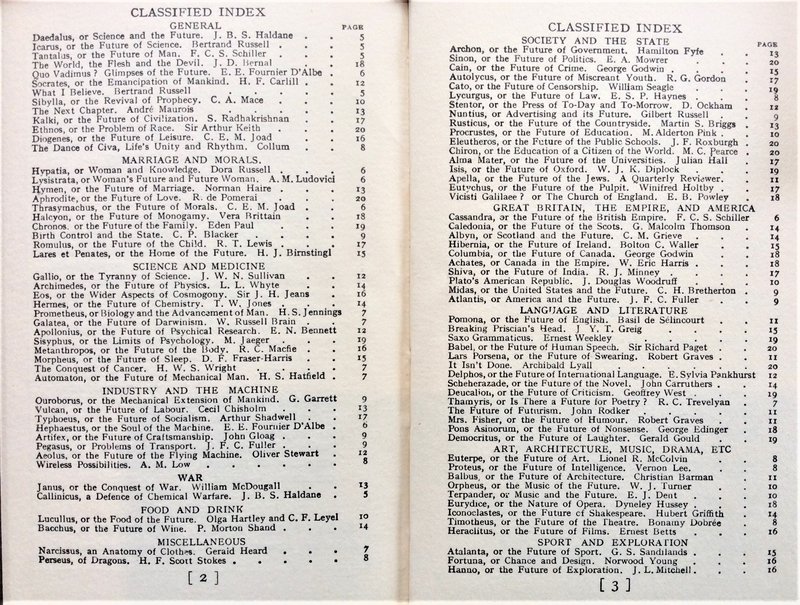
Imagined Futures: Writing, Science, and Modernity in the To-Day and To-Morrow Book Series, 1923–31 is the first full-length study, providing a substantial history and analysis of these 110 pioneering books. Contributors included J. B. S. Haldane, Bertrand Russell, Vernon Lee, Robert Graves, Vera Brittain, Sylvia Pankhurst, Hugh McDiarmid, James Jeans, J. D. Bernal, Winifred Holtby, André Maurois, and many others. The study combines a comprehensive account of its interest, history, and range with a discussion of its key concerns, tropes, and influence.
The argument focuses on science and technology, not only as the subject of many of the volumes, but also as method – especially through the paradigm of the human sciences – applied to other disciplines, and as a source of metaphors for representing other domains. It also includes chapters on war, technology, cultural studies, and literature and the arts.
This book aims to reinstate the series as a vital contribution to the writing of modernity, and to reappraise modernism’s relation to the future, establishing a body of progressive writing which moves beyond the discourses of post-Darwinian degeneration and postwar disenchantment, projecting human futures rather than mythic or classical pasts. It also shows how, as a coordinated body of futurological writing, the series is also revealing about the nature and practices of modern futurology itself.34
Endnotes
- Francis Flagg, “The Machine Man of Ardathia,” Amazing Stories, November 1927, 798–804. ↩
- Susan Merrill Squier, Babies in Bottles: Twentieth-Century Visions of Reproductive Technology (New Brunswick, N.J.: Rutgers University Press, 1994). ↩
- Arthur C. Clarke, Greetings, Carbon-Based Bipeds (New York: St Martin’s Griffin, 2000); cited in Andrew Brown, J. D. Bernal: The Sage of Science (Oxford: Oxford University Press, 2005). 70. ↩
- Manuel Castells, The Information Age: Economy, Society and Culture: Volumes I, II and III: The Rise of the Network Society/The Power of Identity/End of the Millennium (Oxford: Blackwell, 1999). ↩
- See, for example Elleke Boehmer, “Global and Textual Webs in an Age of Transnational Capitalism; or, What Isn’t New about Empire,” Postcolonial Studies 7, no. 1 (2004): 11–26. ↩
- Hyde, illustration in Ford Madox Hueffer, England and the English (New York: McClure, 1907), facing p. 280. C. R. W. Nevninson had much the same idea in 1930 for his modernist view down Fleet Street to St Paul’s, through geometrically criss-crossing telephone wires, entitled Amongst the Nerves of the World: oil on canvas, H 977 mm; W 725 mm; Museum of London. ↩
- John Perry Barlow, “A Declaration of the Independence of Cyberspace,” 1996, https://www.eff.org/cyberspace-independence. ↩
- H. G. Wells, “World Brain: The Idea of a Permanent World Encyclopaedia,” in World Brain (London: Methuen, 1938). Originally written in 1937 as a contribution to the new Encyclopédie Française. ↩
- A. N Whitehead, Science and the Modern World (New York: Macmillan, 1925). 166–67. ↩
- Hatfield’s The Inventor and his World (London: Kegan Paul, Trench, Trübner & Co., 1933) was reissued as a Pelican book in 1948. Joseph Agassi, Science in Flux (Dordrecht: D. Reidel, 1975), p. 282, refers to Hatfield as “the most important writer on technology, perhaps.” ↩
- No trace of Hatfield’s “chemical robot” has been found in the popular press. It is thus probable that the phrase refers not to an android robot but a mechanical control system for a chemical process. Hatfield had filed a US patent on September 20, 1927, for an “Apparatus for Effecting Chemical Tests and Controlling Chemical Reactions” (Patent no. 1,643,243). And he was reported in the Journal and Proceedings of the Institute of Chemistry of Great Britain and Ireland 54 (1930) 307–356 (p. 327), as describing then demonstrating “an instrument of his own invention for measuring the hardness of water.” However, the jacket blurb may invoke the interest in 1928 in the UK’s first Android robot, Eric, who was recreated by the Science Museum for its 2017 Robots exhibition. See: http://www.sciencemuseum.org.uk/visitmuseum/plan_your_visit/exhibitions/eric. ↩
- Brian Stableford, “Science Fiction between the Wars,” in Anatomy of Wonder: A Critical Guide to Science Fiction, ed. Neil Barron (New Providence, N.J.: Bowker, 1995), 62–114. 70. ↩
- On Stapledon’s debt to Haldane see also James J. Hughes, “Back to the Future: Contemporary Biopolitics in 1920s’ British Futurism,” EMBO Reports 9 (2008): S59–63, https://doi.org/https://doi.org/10.1038/embor.2008.68. ↩
- Patrick Parrinder, Shadows of the Future: H. G. Wells, Science Fiction, and Prophecy (Syracuse: Syracuse University Press, 1995). 140. ↩
- Sterling acknowledges the influence of The World, the Flesh, and the Devil in the Introduction to Bruce Sterling, Schismatrix Plus (New York: Ace Books, 1996). He calls it “a stellar masterpiece of cosmic speculation,” p. 2. ↩
- Robert Scholes and Eric S. Rabkin, “Bibliography III: Science Backgrounds,” in Science Fiction: History, Science, Vision (London: Oxford University Press, 1977). 240. ↩
- Jacket of Automaton. ↩
- Robert Brain, “Representation on the Line: The Graphic Method and the Instruments of Scientific Modernism,” in From Energy to Information: Representation in Science, Art, and Literature, ed. B. Clark and L. D. Henderson (Stanford, Calif.: Stanford University Press, 2002), 155–78. See p. 177 on how “the technological crossover from energy to information was accomplished in an analog format.” ↩
- David Trotter, “In the Soup,” London Review of Books 36, no. 19 (October 9, 2014): 27–28. ↩
- See https://collection.maas.museum/object/374881. ↩
- J. B. S. Haldane, “Machines That Think,” Daily Worker, August 29, 1940. 85–87. ↩
- Chapter 6 in Max Saunders, Imagined Futures: Writing, Science, and Modernity in the To-Day and To-Morrow Book Series, 1923–31 (Oxford: Oxford University Press, 2019). ↩
- E. M. Forster’s 1909 story “The Machine Stops” includes an earlier, and prewar, appearance of a video phone and indeed of a form of multimedia mechanical web (“cinematophote,” p. 15): E. M. Forster, “The Machine Stops,” in The Eternal Moment and Other Stories (London: Sidgwick and Jackson, 1928), 1–61. ↩
- Rory Cellan-Jones, “Stephen Hawking Warns Artificial Intelligence Could End Mankind,” BBC News, December 2, 2014, https://www.bbc.co.uk/news/technology-30290540. ↩
- Sibylla, 43; Apollonius, 53; others use it in the sense of a biological medium for cultivating cells (Daedalus, 60) or a physical one for transmitting waves (Automaton, 43). ↩
- Marshall McLuhan, Understanding Media: The Extensions of Man (New York: McGraw-Hill, 1964). ↩
- For a fuller discussion, see Chapters 4 and 5 in Saunders, Imagined Futures: Writing, Science, and Modernity in the To-Day and To-Morrow Book Series, 1923–31. ↩
- Sigmund Freud, Civilization and Its Discontents, vol. XXI, Standard Edition of the Complete Psychological Works of Sigmund Freud (London: Hogarth Press, 1930). 59–145. ↩
- See Fournier d’Albe’s preface in A. Von Schrenck-Notzing, Phenomena of Materialisation: A Contribution to the Investigation of Mediumistic Teleplastics, trans. Fournier d’Albe (London: Kegan Paul, Trench, and Trubner, 1920). ↩
- Kaku, “The Universe in a Nutshell,” http://www.floatinguniversity.com/kaku-transcript; accessed July 26, 2017. ↩
- Mark B. N. Hansen, Feed-Forward: On The Future of Twenty-First-Century Media (Chicago: University of Chicago Press, 2015). 4. ↩
- J. B. S. Haldane, Possible Worlds and Other Essays (London: Chatto and Windus, 1927). 303. ↩
- See, for example Nicholas G. Carr, The Shallows: What the Internet Is Doing to Our Brains (New York; London: W. W. Norton, 2011). ↩
- For more about this book, see https://global.oup.com/academic/product/imagined-futures-9780198829454?q=max%20saunders&lang=en&cc=gb ↩
Bibliography
- Barlow, John Perry. “A Declaration of the Independence of Cyberspace,” 1996. https://www.eff.org/cyberspace-independence.
- Boehmer, Elleke. “Global and Textual Webs in an Age of Transnational Capitalism; or, What Isn’t New about Empire.” Postcolonial Studies 7, no. 1 (2004): 11–26.
- Brain, Robert. “Representation on the Line: The Graphic Method and the Instruments of Scientific Modernism.” In From Energy to Information: Representation in Science, Art, and Literature, edited by B. Clark and L. D. Henderson, 155–78. Stanford, Calif.: Stanford University Press, 2002.
- Brown, Andrew. J. D. Bernal: The Sage of Science. Oxford: Oxford University Press, 2005.
- Carr, Nicholas G. The Shallows: What the Internet Is Doing to Our Brains. New York; London: W. W. Norton, 2011.
- Castells, Manuel. The Information Age: Economy, Society and Culture: Volumes I, II and III: The Rise of the Network Society/The Power of Identity/End of the Millennium. Oxford: Blackwell, 1999.
- Cellan-Jones, Rory. “Stephen Hawking Warns Artificial Intelligence Could End Mankind.” BBC News, December 2, 2014. https://www.bbc.co.uk/news/technology-30290540.
- Flagg, Francis. “The Machine Man of Ardathia.” Amazing Stories, November 1927, 798–804.
- Forster, E. M. “The Machine Stops.” In The Eternal Moment and Other Stories, 1–61. London: Sidgwick and Jackson, 1928.
- Freud, Sigmund. Civilization and Its Discontents. Vol. XXI. Standard Edition of the Complete Psychological Works of Sigmund Freud. London: Hogarth Press, 1930.
- Haldane, J. B. S. “Machines That Think.” Daily Worker, August 29, 1940.
- Haldane, J. B. S. Possible Worlds and Other Essays. London: Chatto and Windus, 1927.
- Hansen, Mark B. N. Feed-Forward: On The Future of Twenty-First-Century Media. Chicago: University of Chicago Press, 2015.
- Hughes, James J. “Back to the Future: Contemporary Biopolitics in 1920s’ British Futurism.” EMBO Reports 9 (2008): S59–63. https://doi.org/https://doi.org/10.1038/embor.2008.68.
- McLuhan, Marshall. Understanding Media: The Extensions of Man. New York: McGraw-Hill, 1964.
- Parrinder, Patrick. Shadows of the Future: H. G. Wells, Science Fiction, and Prophecy. Syracuse: Syracuse University Press, 1995.
- Saunders, Max. Imagined Futures: Writing, Science, and Modernity in the To-Day and To-Morrow Book Series, 1923–31. Oxford: Oxford University Press, 2019.
- Scholes, Robert, and Eric S. Rabkin. “Bibliography III: Science Backgrounds.” In Science Fiction: History, Science, Vision. London: Oxford University Press, 1977.
- Squier, Susan Merrill. Babies in Bottles: Twentieth-Century Visions of Reproductive Technology. New Brunswick, N.J.: Rutgers University Press, 1994.
- Stableford, Brian. “Science Fiction between the Wars.” In Anatomy of Wonder: A Critical Guide to Science Fiction, edited by Neil Barron, 62–114. New Providence, N.J.: Bowker, 1995.
- Sterling, Bruce. Schismatrix Plus. New York: Ace Books, 1996.
- Trotter, David. “In the Soup.” London Review of Books 36, no. 19 (October 9, 2014): 27–28.
- Von Schrenck-Notzing, A. Phenomena of Materialisation: A Contribution to the Investigation of Mediumistic Teleplastics. Translated by Fournier d’Albe. London: Kegan Paul, Trench, and Trubner, 1920.
- Wells, H. G. “World Brain: The Idea of a Permanent World Encyclopaedia.” In World Brain. London: Methuen, 1938.
- Whitehead, A. N. Science and the Modern World. New York: Macmillan, 1925.



